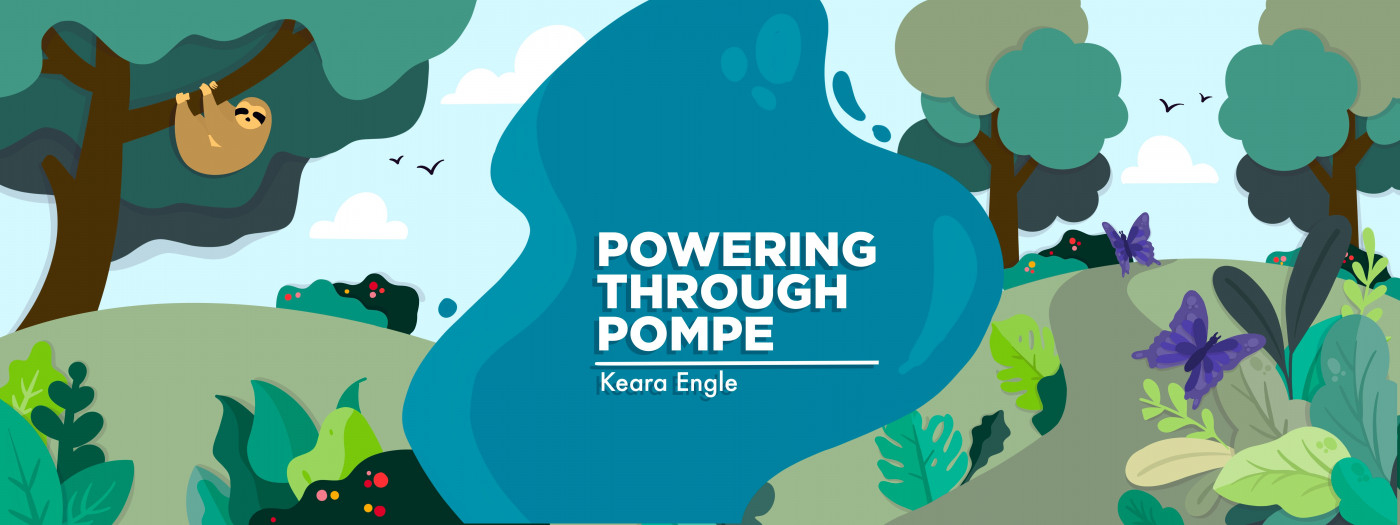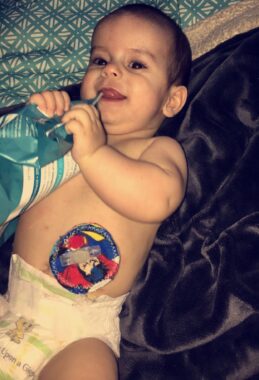How G-tube feeding is beneficial for my son with Pompe disease
A columnist's son can't eat by mouth, but she's found a solution that works

Parents never want to see their children experience anything hard or painful. Yet I can recall many times when I’ve had to put my 6-year-old son, Cayden, through something difficult for his own good.
One of my memories from his early years is when he had to get a gastrostomy tube, known as a G-tube. He was 6 months old at the time, and I remember being so nervous about the procedure, which would install the feeding line through his abdomen to reach his stomach. Until that point, Cayden, who has infantile-onset Pompe disease, had been fed with a nasogastric (NG) tube, which entered through his nose and went down his throat before ending in his stomach.
You can imagine how complicated it was to get a tube through the nose of a baby who won’t stay still. At the time, though, I was more comfortable with that NG option for his food because it didn’t feel permanent. But I knew a feeding tube was most likely the better long-term choice. Because of Cayden’s disease, he struggled to eat and was even classified as failure to thrive for quite some time. He also had trouble with aspiration when using his mouth to eat.
No spoonful of sugar required

Cayden Engle at 1 year old shows off his G-tube. (Photo by Keara Engle)
I had to make the hard decision of proceeding with a G-tube. Thankfully, I quickly realized that I’d made the right decision. Cayden still uses his G-tube for food and water. It also helped that his post-surgery healing process was smooth and easy.
Over the years, I’ve found the tube to be beneficial. Cayden can’t eat by mouth, but we’ve had him on a blended diet since he was 1. He still gets to participate in family dinners and holiday meals, which makes him feel included. All we have to do is blend the meal and put it in his tube.
The G-tube is also extremely helpful with medications and hydration. Sometimes children put up a fight when it comes to taking medicine. But with the G-tube, Cayden doesn’t have to physically swallow it, which means no fuss! I don’t have to worry about getting him to take antibiotics or pain relievers.
It can also be hard to get children to drink water sometimes, especially during warmer months when they need it the most. In the spring and summer, I can easily keep Cayden hydrated by putting some extra water directly into his G-tube. This eases my mind on hot days when we’re outdoors.
Of course, I hope Cayden will one day be able to eat by mouth; I anticipate that it might be easier for him as he gets older. But if not, it’s not a big deal. I’m in no rush to get rid of the tube anytime soon.
Note: Pompe Disease News is strictly a news and information website about the disease. It does not provide medical advice, diagnosis, or treatment. This content is not intended to be a substitute for professional medical advice, diagnosis, or treatment. Always seek the advice of your physician or other qualified health provider with any questions you may have regarding a medical condition. Never disregard professional medical advice or delay in seeking it because of something you have read on this website. The opinions expressed in this column are not those of Pompe Disease News or its parent company, Bionews, and are intended to spark discussion about issues pertaining to Pompe disease.








Leave a comment
Fill in the required fields to post. Your email address will not be published.